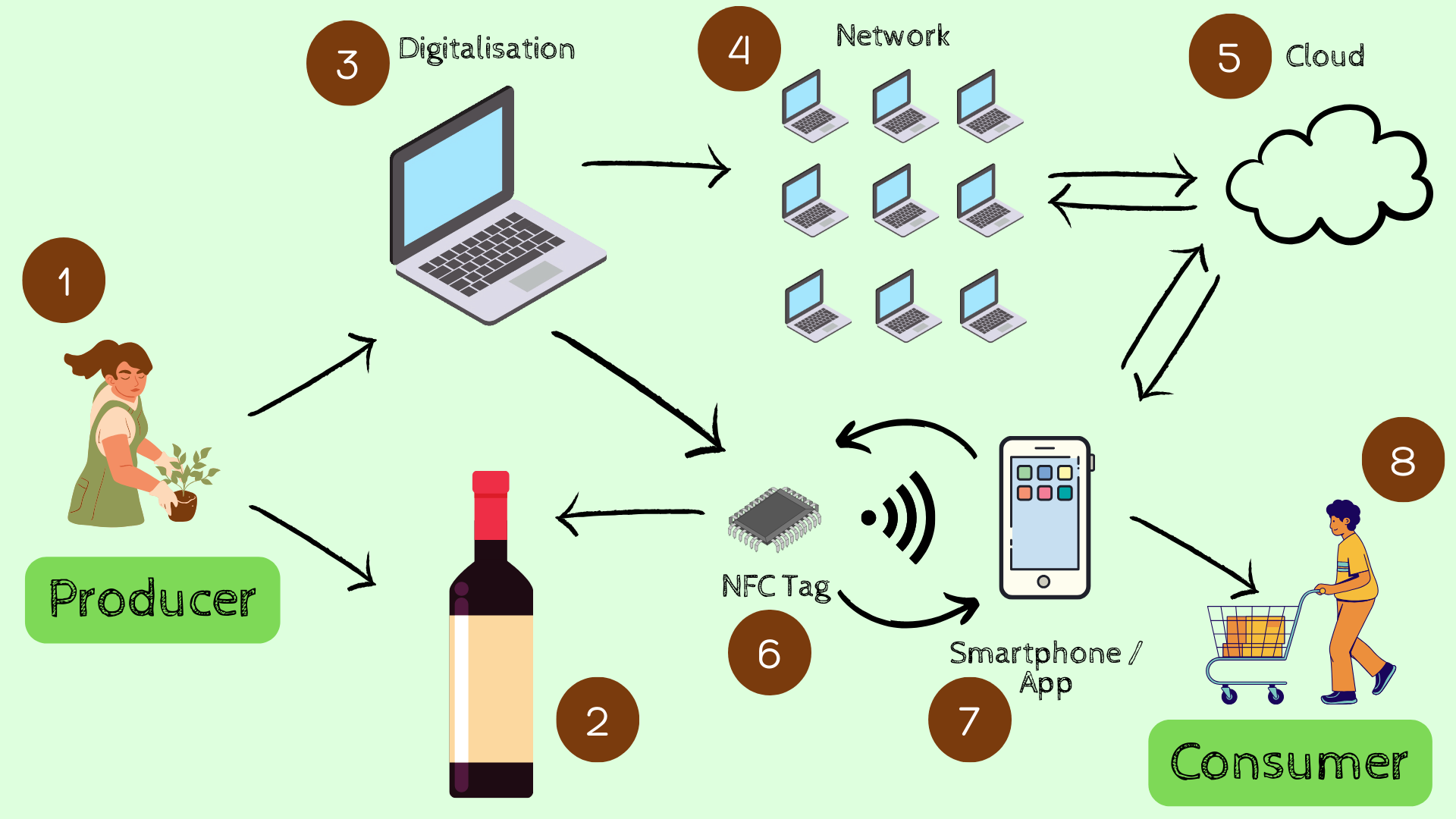The luxury wine sector thrives as a multi-billion dollar enterprise, but so is wine counterfeit and fraud, which is not restricted merely to fine wines but entry level bottles as well. During the prestigious OIV World Congress of Vine and Wine 2023 in Cadiz-Jerez, Spain, I was privileged to showcase a piece from my doctoral research titled ‘Verified Vintages: Leveraging Blockchain To Stop Wine Fraud’, highlighting the blend of modern technology with traditional winemaking practices. Our research explores the cutting-edge application of blockchain to tackle the longstanding problem of wine fraud, providing a glimmer of hope for both vintners and aficionados. After its debut in Jerez, the paper has been published here, but for those seeking a brief digest that captures our study’s core findings, please continue reading.
Understanding Wine Counterfeiting
The upscale wine market commands billions of dollars, naturally attracting nefarious elements. While estimates vary, Europol estimates that the financial damage to the wine and spirits market within the EU is 1.3 billion Euros alone.
The chronicle of wine counterfeiting, deeply rooted in history through adulteration and imitation, sketches a complex narrative of deceit over millennia. Contemporary schemes of this fraud involve intricate counterfeits of premium wines, leading to substantial financial losses and tarnishing the reputations of authentic producers. This issue is exacerbated by a growing consumer insistence on transparency about the origins, safety, and production methods of their wines, a demand that runs counter to the secretive nature of fraudulent activities.
Blockchain: A Ray of Hope
Against this scenario, Blockchain Technology (BCT) stands out as a celebrated solution, heralding an era of heightened trust, security, transparency, and traceability. Implementing BCT within the wine supply chain creates a robust defense against wine counterfeiting, ensuring each bottle’s authenticity from the vineyard to the dining table. Our research employed a multi-case study approach to examine BCT’s effect, focusing on the integration of both fungible and non-fungible tokens (NFTs) in the wine industry. This investigation is supported by a comprehensive review of BCT in thwarting fraud and counterfeiting across different sectors, outlining the advantages and challenges associated with these technologies.
BCT in the Wine Industry
Venturing into BCT’s practical uses, we identified three innovative models that showcase the technology’s flexibility. Each model presents a distinctive method for capturing and safeguarding data throughout the wine’s production and distribution journey, using a combination of fungible and non-fungible tokens to maintain the integrity and genuineness of wine products.
Our findings highlight the subtle benefits and constraints of each model, stressing the need for a direct connection between the tangible product and its digital counterpart to deter fraud effectively. However, introducing BCT into the wine industry faces obstacles, including technical limitations, regulatory challenges, and the significant expenses linked to blockchain adoption.

For example, the diagram above demonstrates employing fungible or non-fungible tokens alongside Near-Field Communication (NFC) technology. This technique enables the embedding of information directly onto a chip within the bottle, which can be authenticated using a reader, like a smartphone, to access blockchain-stored data.
Practical Cases
Demonstrating BCT’s potential, we delve into case studies such as the Enseal/Entrust system, ChaiVault, and the VinID project. These ventures illustrate blockchain’s practicality in safeguarding wine’s provenance and authenticity, shedding light on the technology’s capability to fortify and elevate the wine industry’s stature.
Based on these real-life instances, we evaluate the implemented processes and their interoperability with technologies like NFC, IoT, and cloud solutions, assessing the impact and viability of these approaches.
While our research emphasizes BCT’s transformative promise in countering wine counterfeiting, it also recognizes the hurdles to its widespread adoption, including the necessity for faultless data entry, the intricacies of technological and regulatory frameworks, and the hefty investments required for its deployment. Particularly, the high cost suggests that applying BCT to mass-market wines is not yet economically feasible.
Nonetheless, despite these challenges, blockchain’s benefits, especially in verifying authenticity and enhancing consumer engagement, offer strong incentives for its further exploration within the wine industry.
Conclusion and Looking Forward
The convergence of blockchain technology with wine authenticity opens up a new frontier in the fight against fraud. As the sector works through the adoption and integration challenges, BCT’s potential to transform wine authentication and bolster consumer confidence is immense.
Continued research and development will be vital in unlocking this potential, steering the wine industry toward a future marked by greater transparency, security, and reliability. Our investigation sought to assess the current landscape, pinpointing BCT’s strengths and weaknesses. Like the technology’s implementation, this journey is far from over, with more insights on this thrilling topic to follow and a personal thanks goes to my co-authors Prof. Jon Hanf and Michael Kramer. For additional information, the complete research paper is available here.

